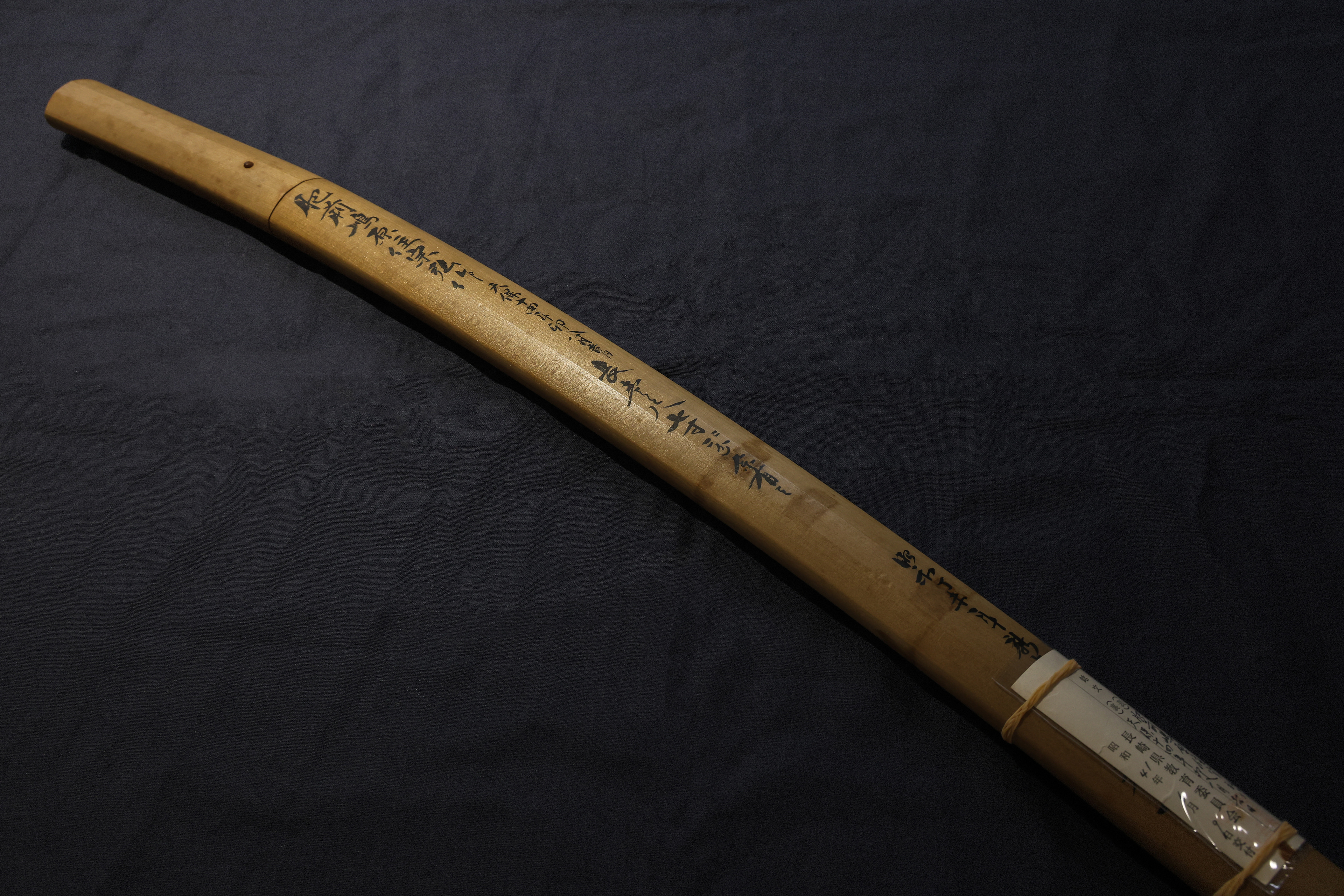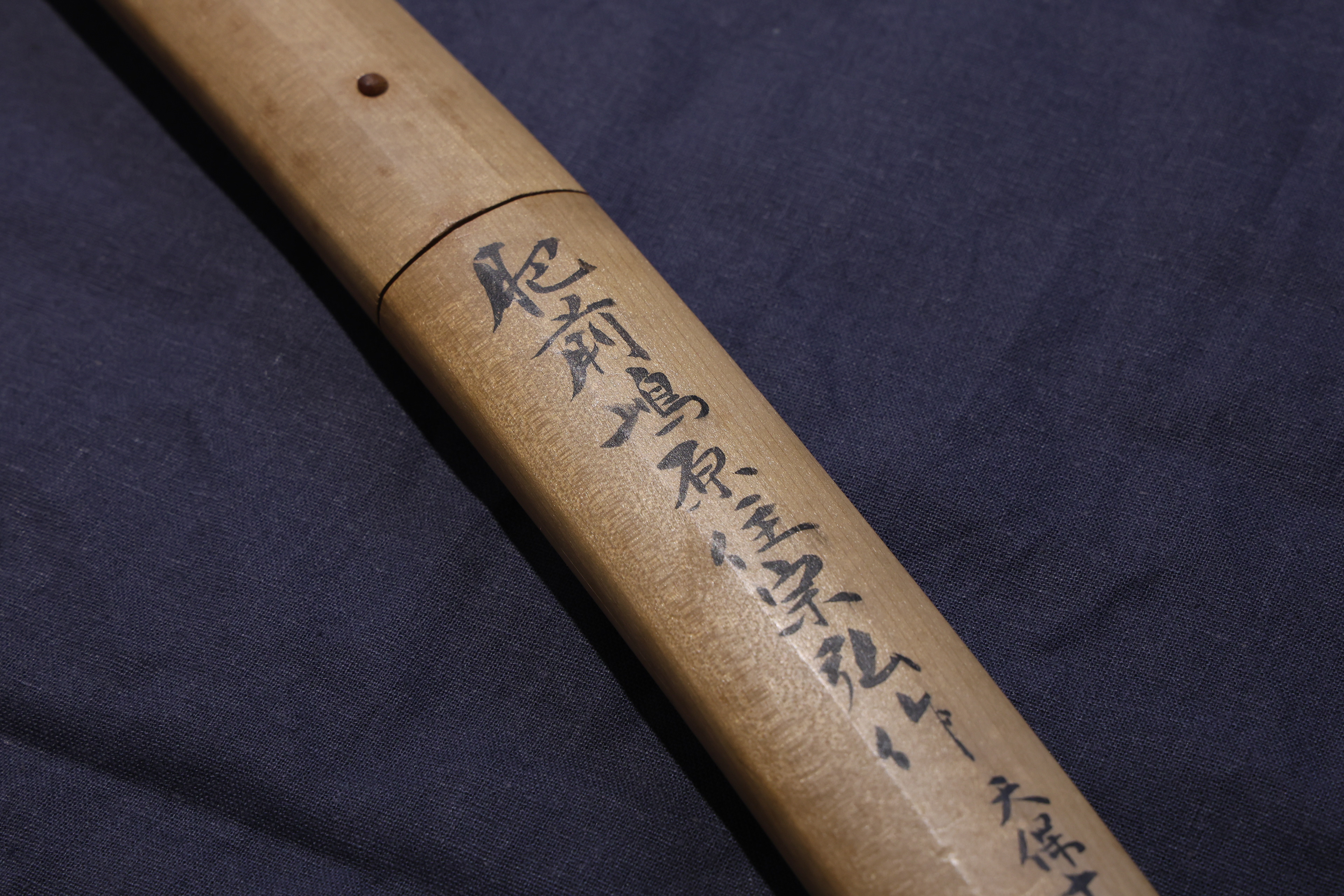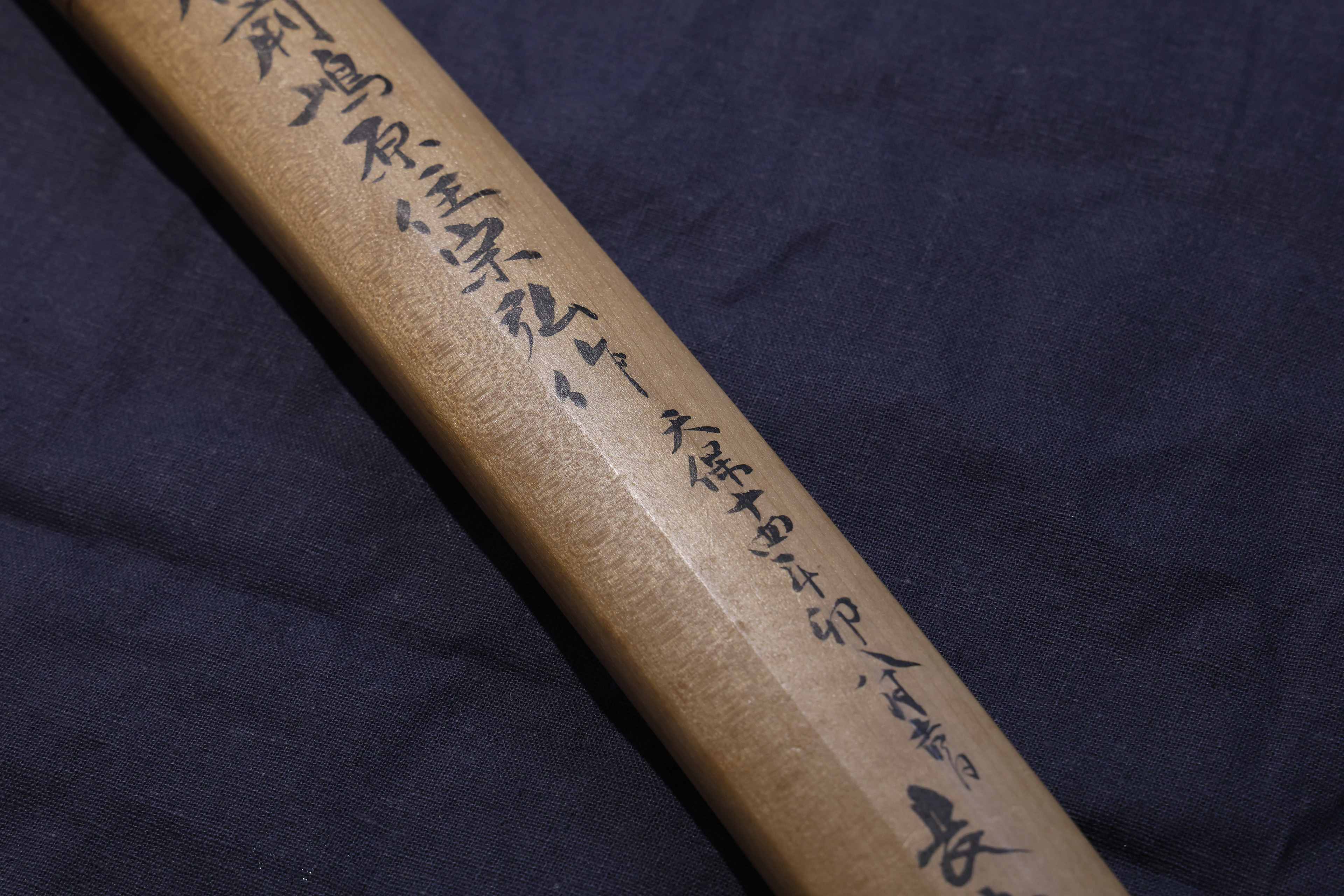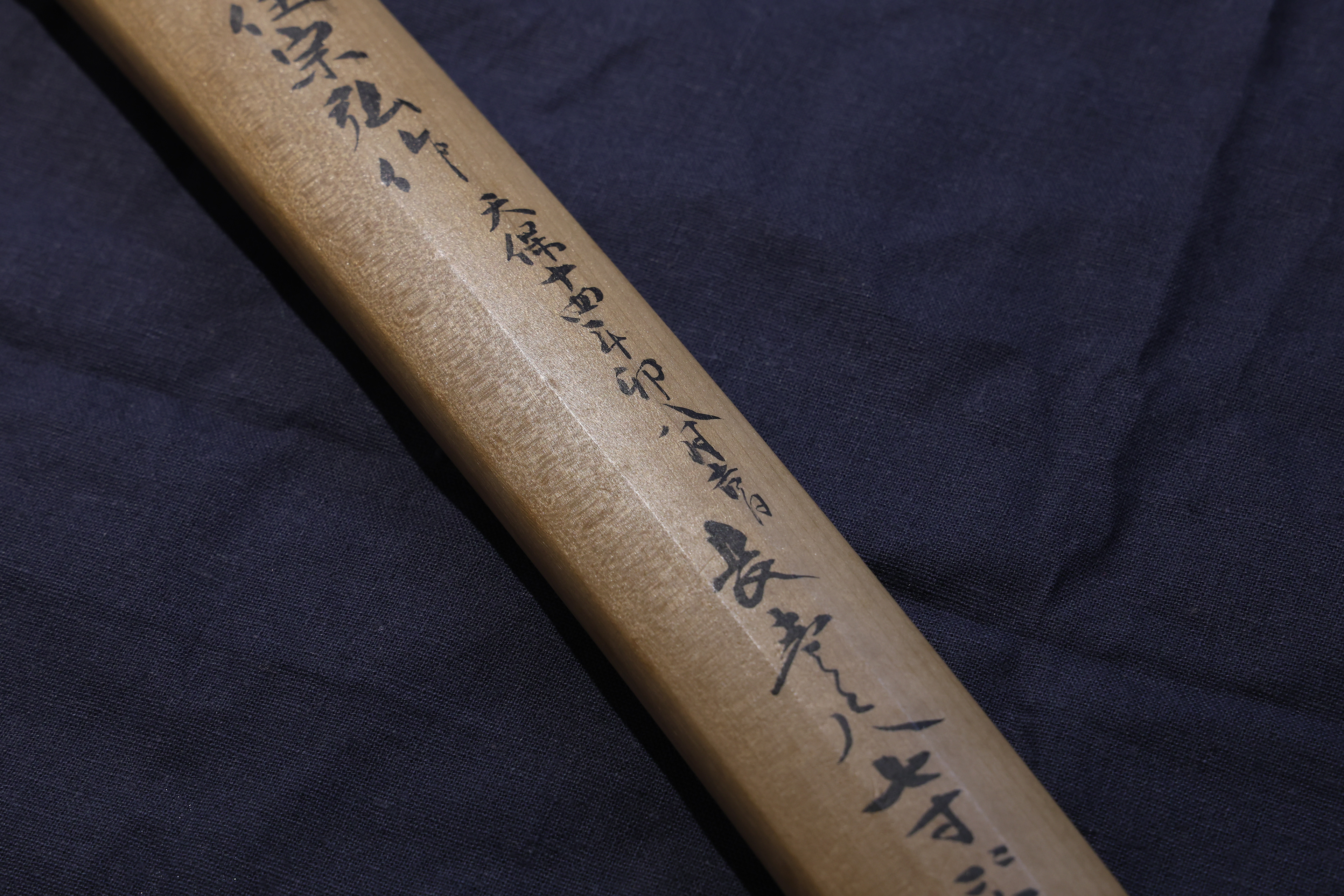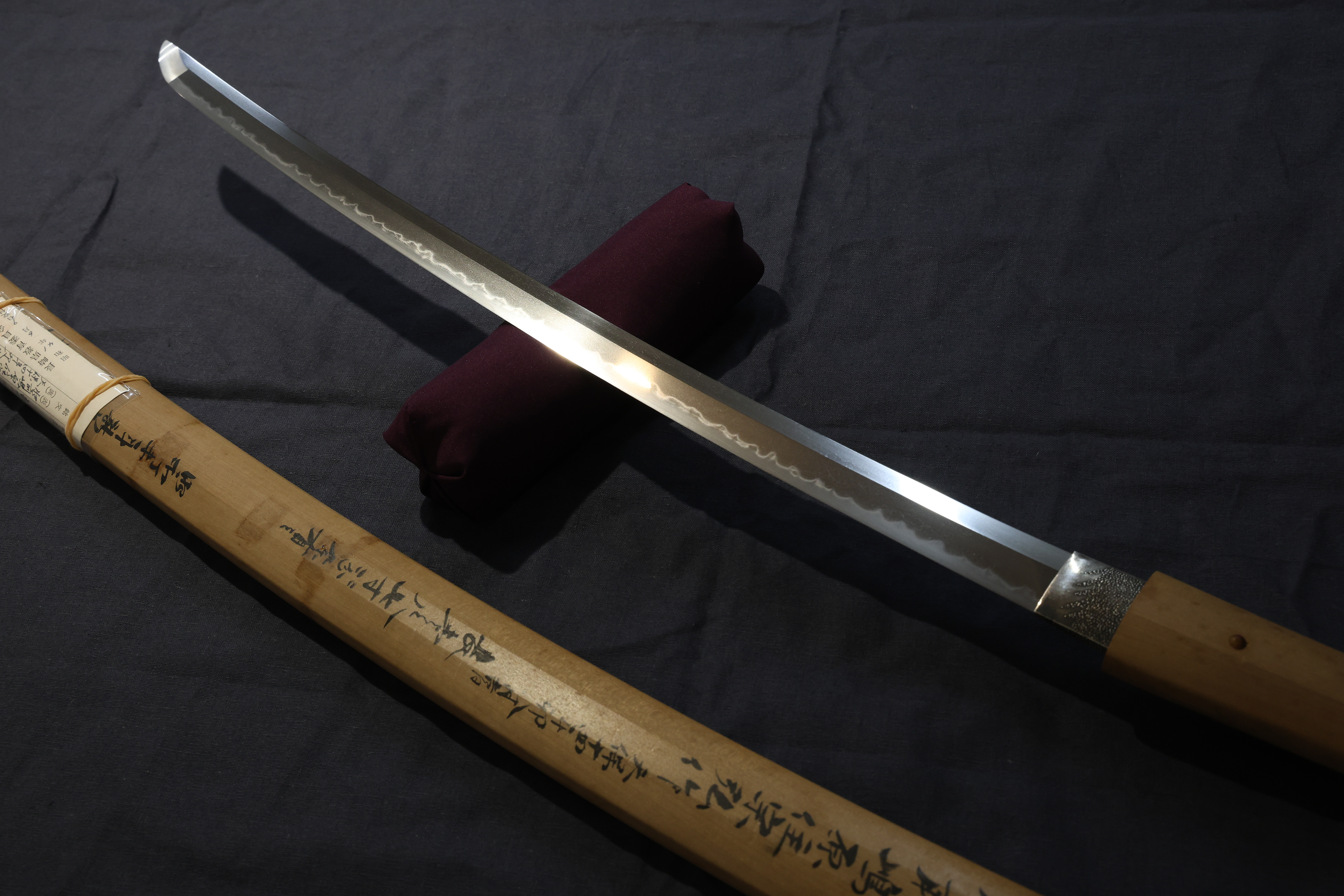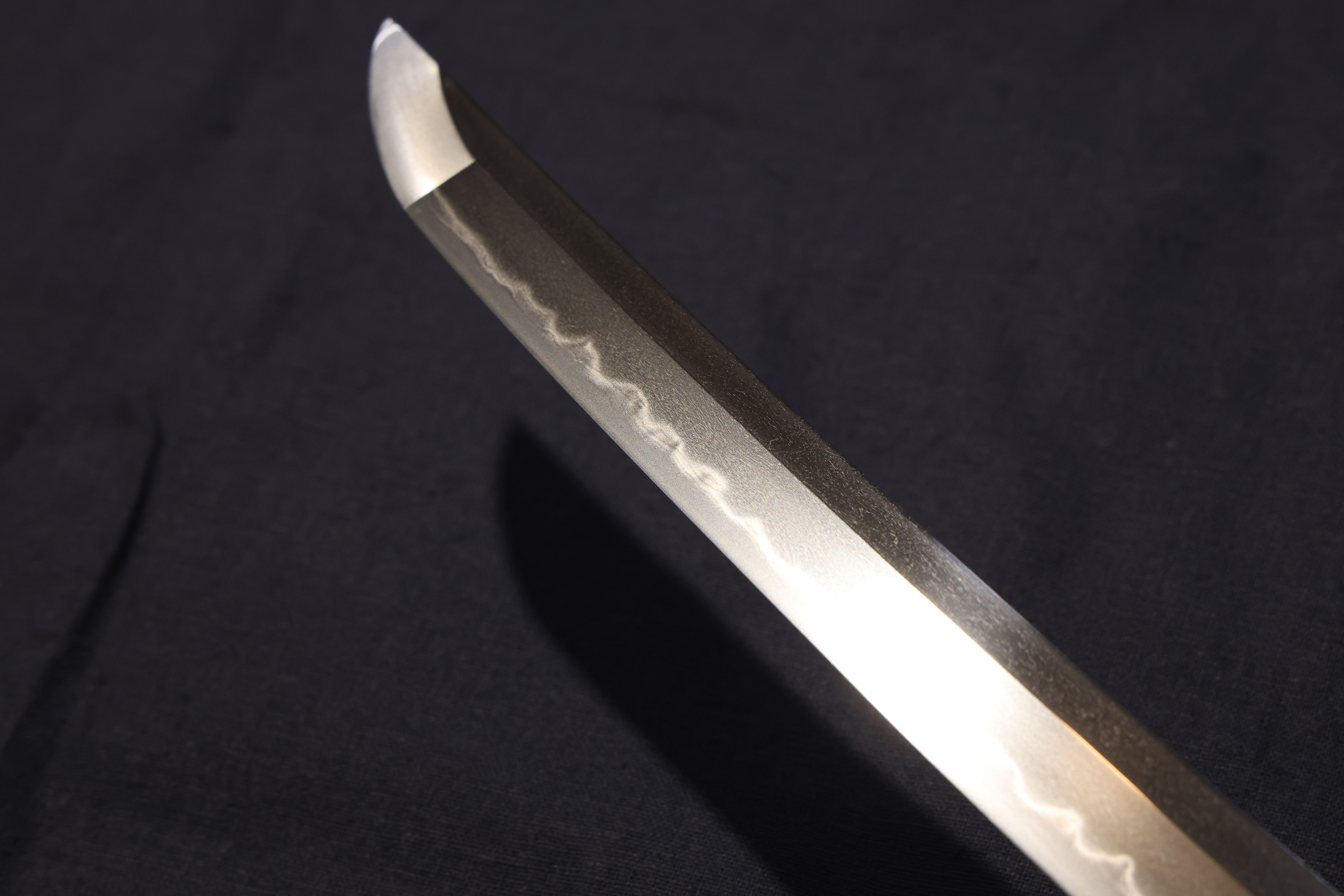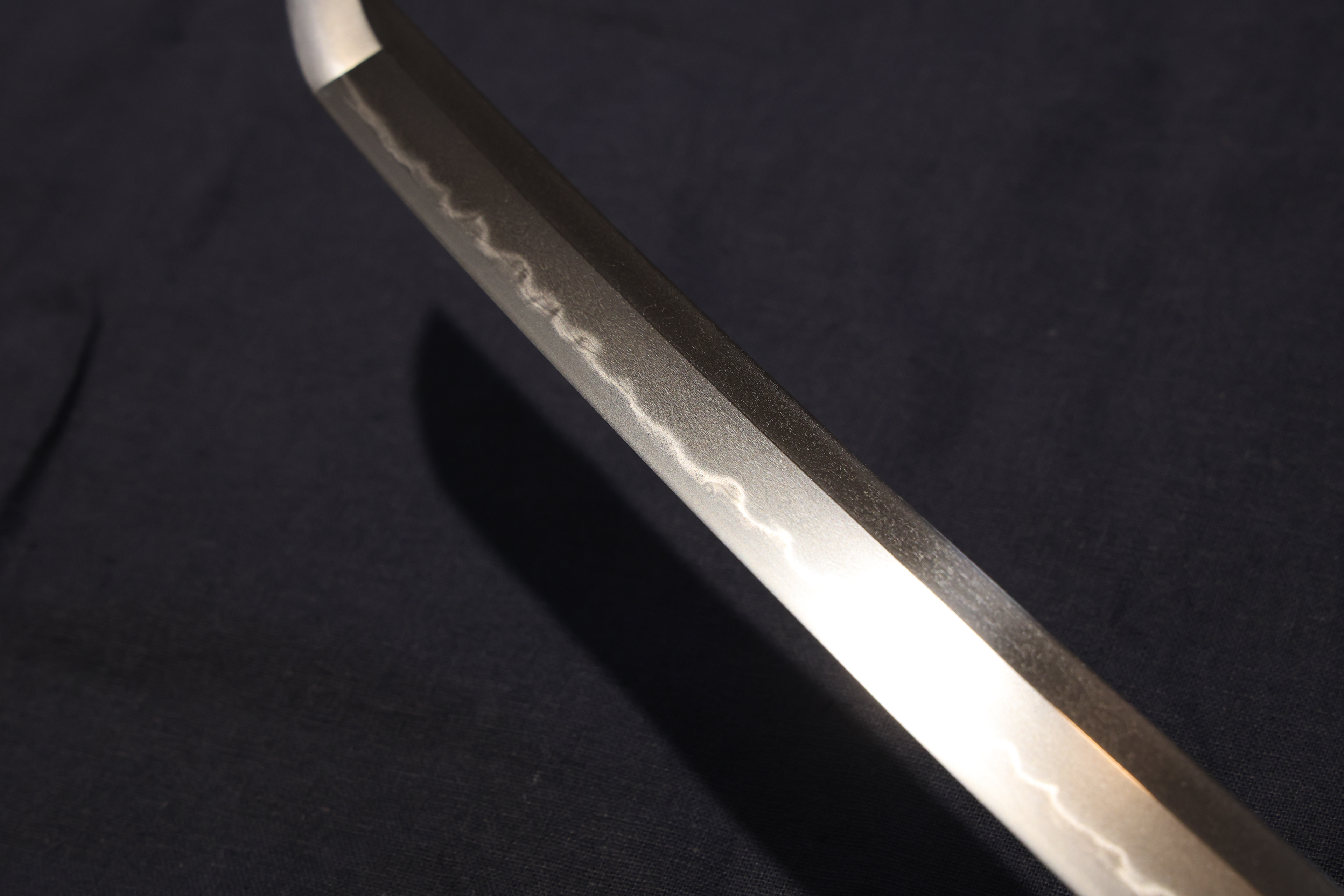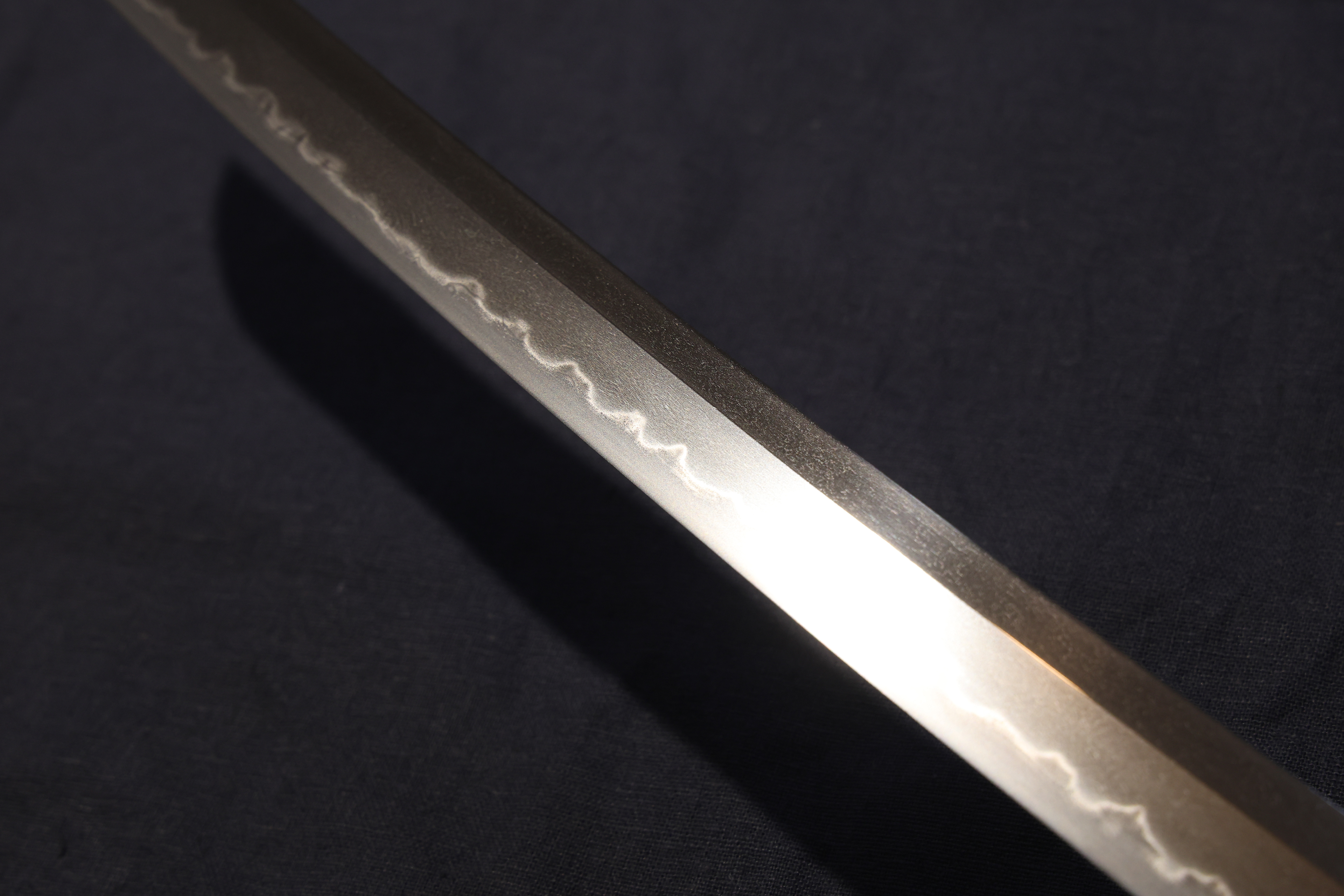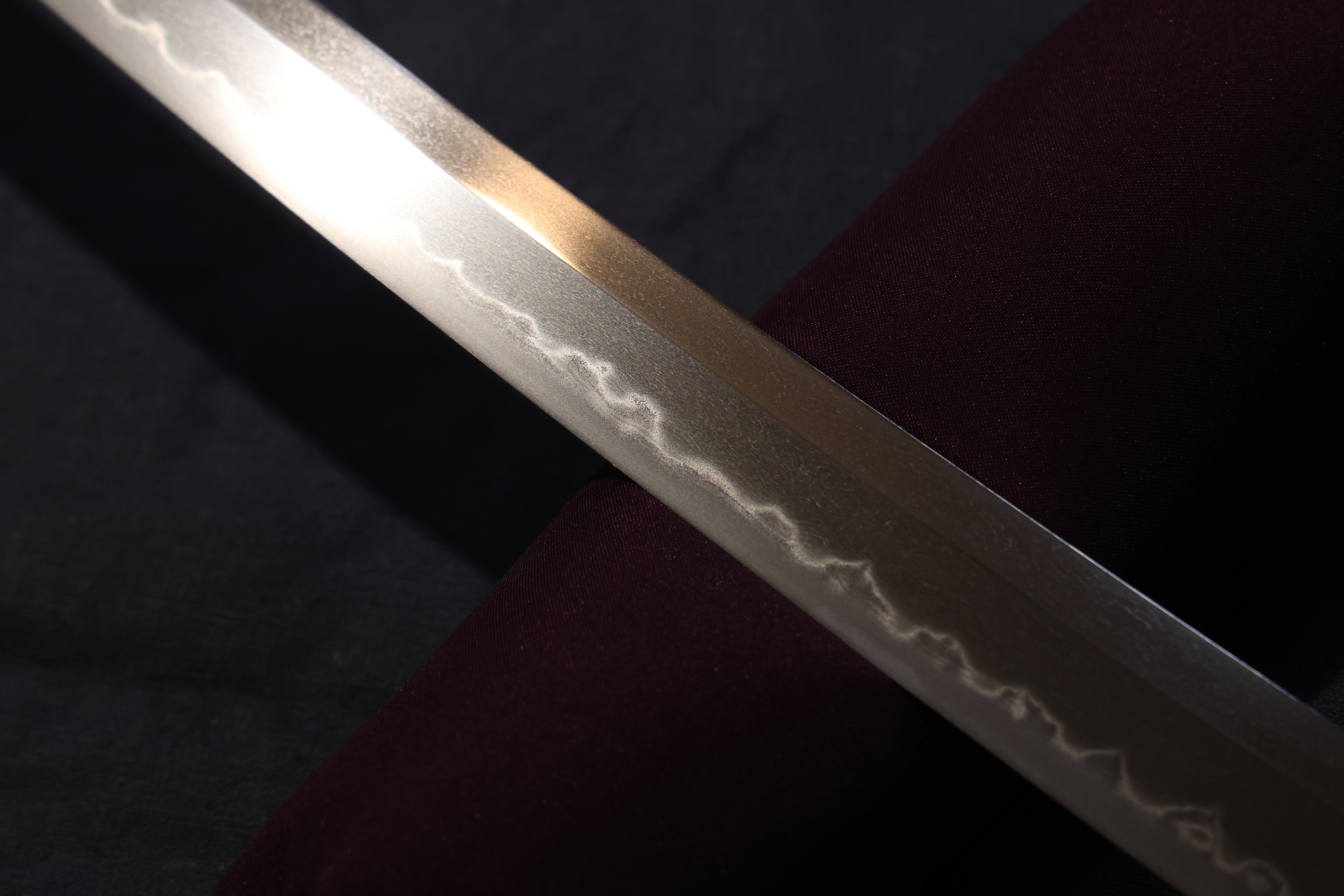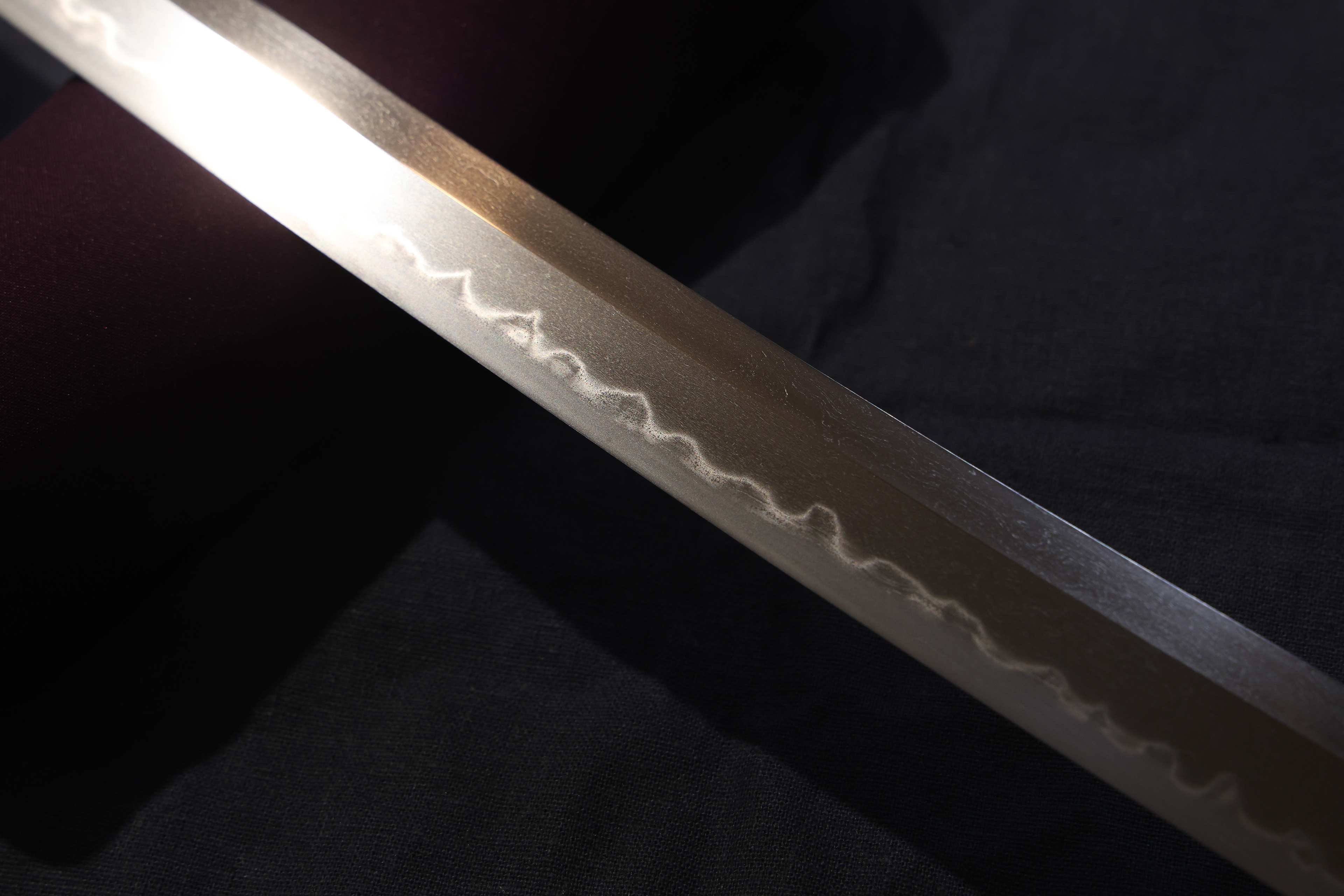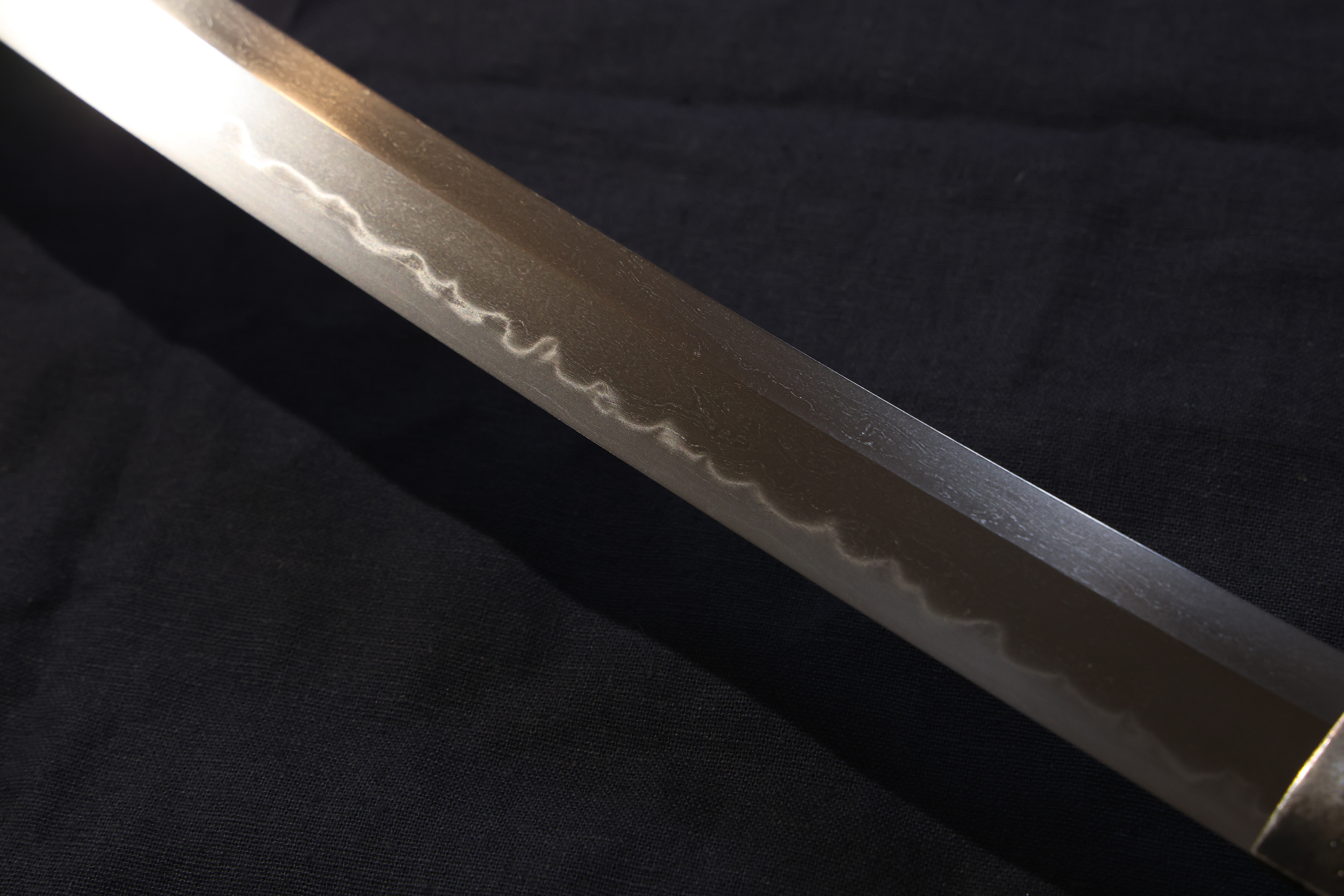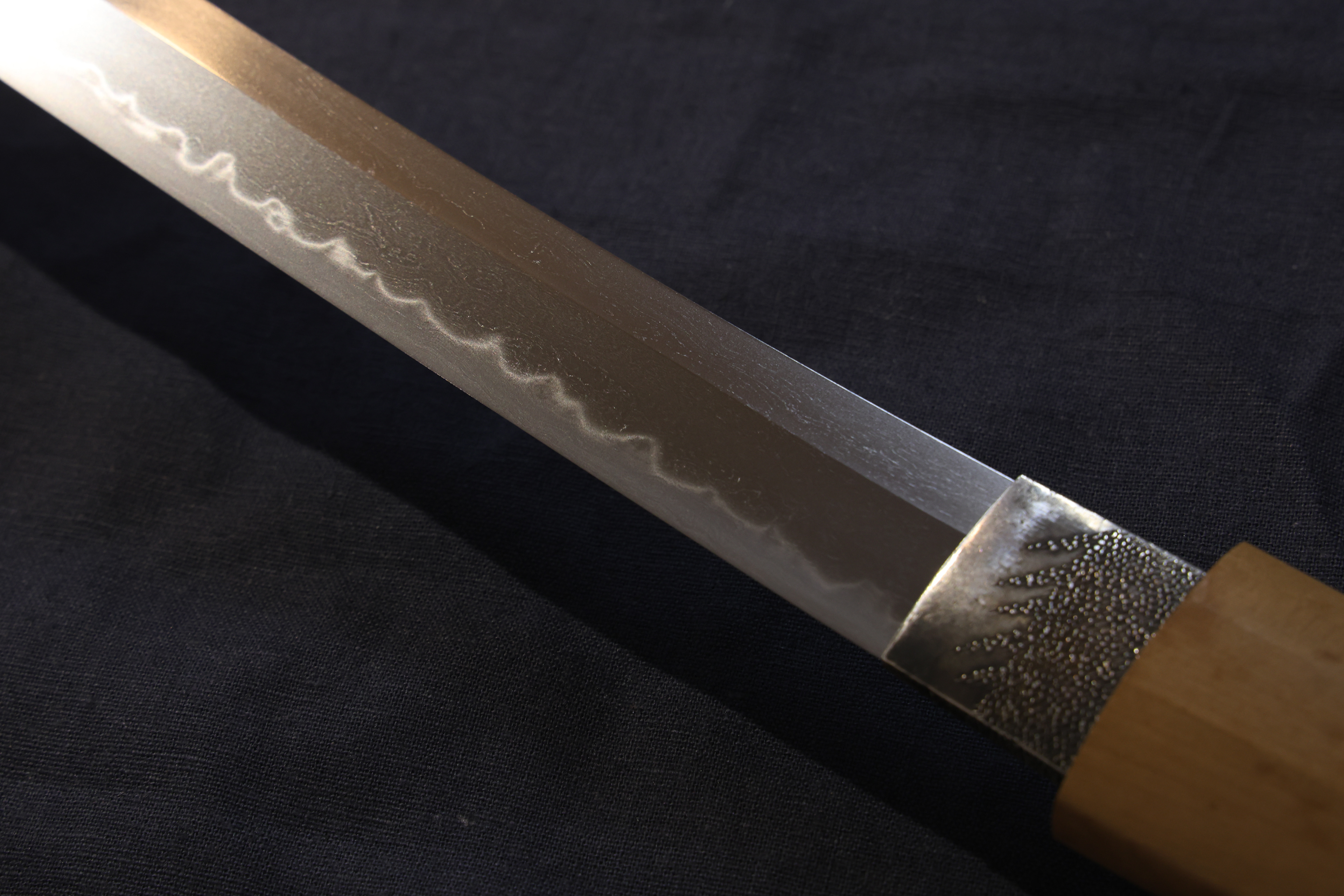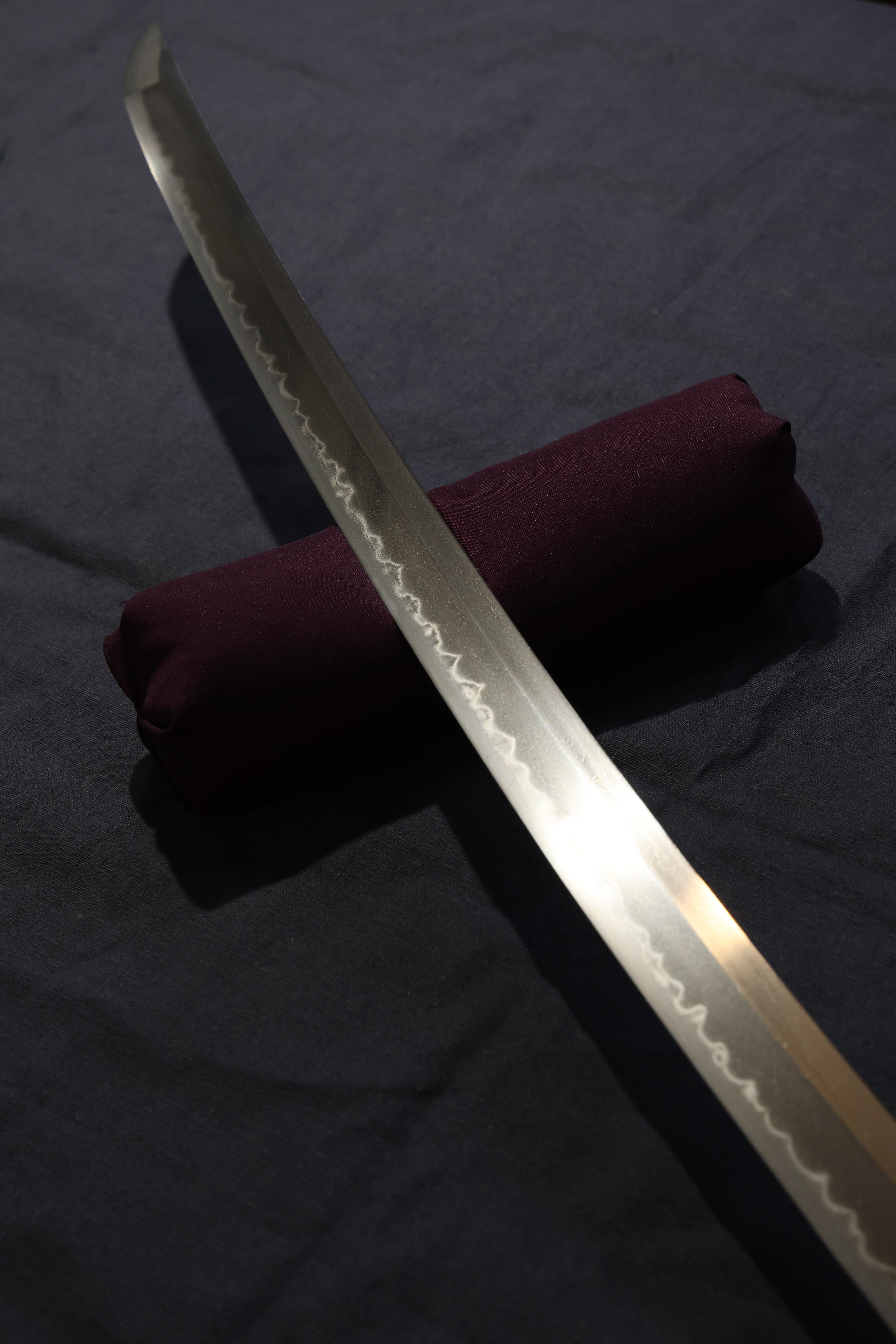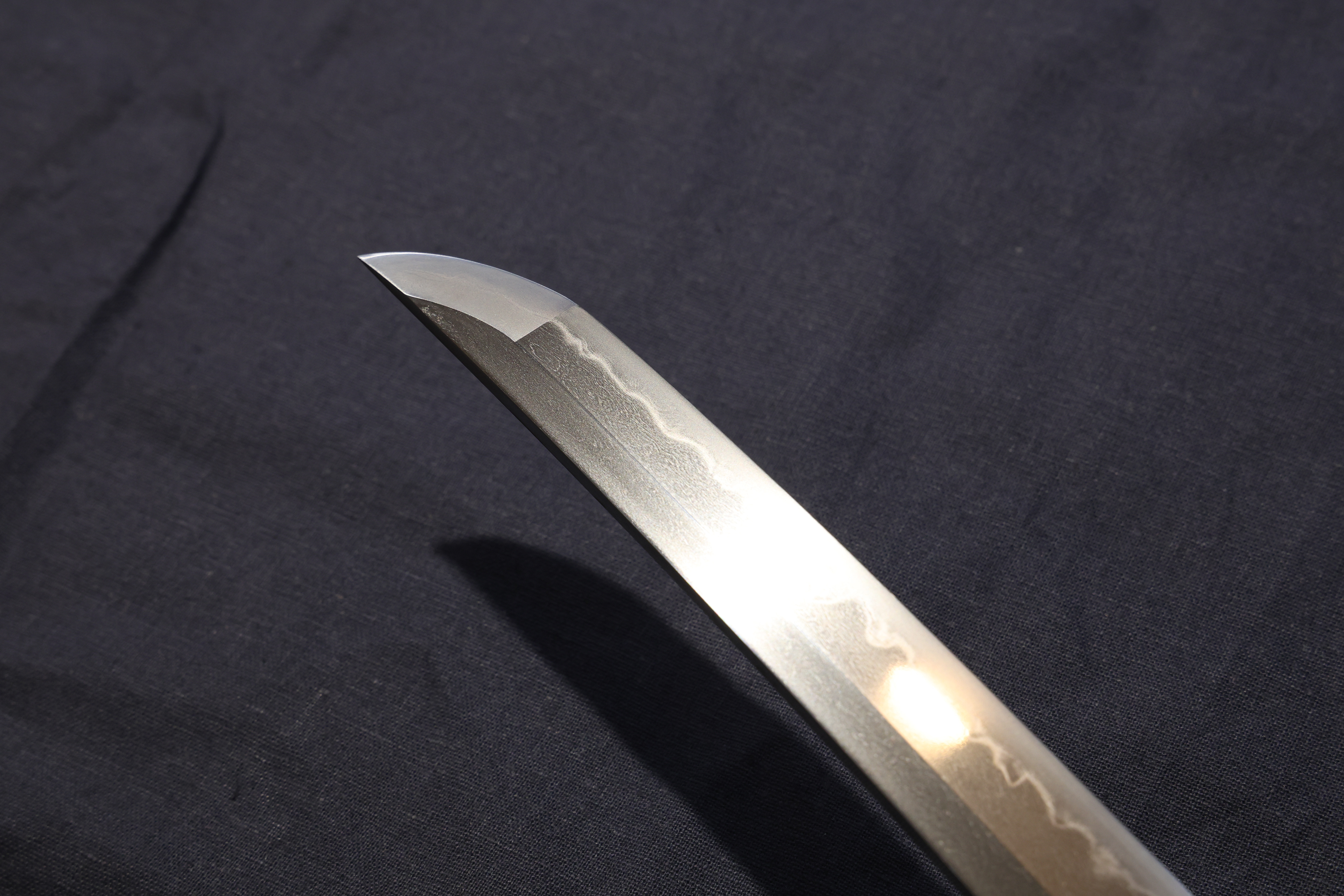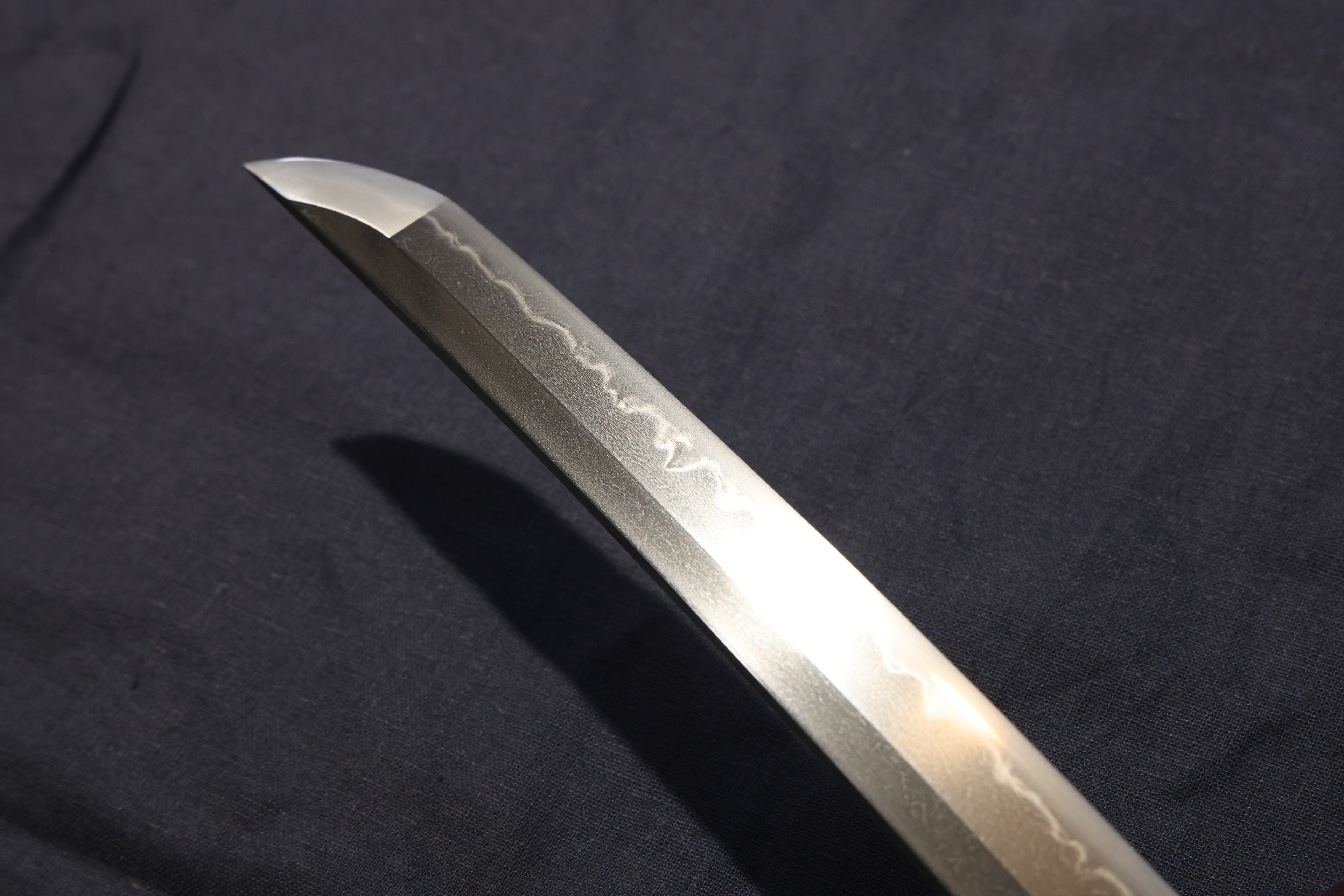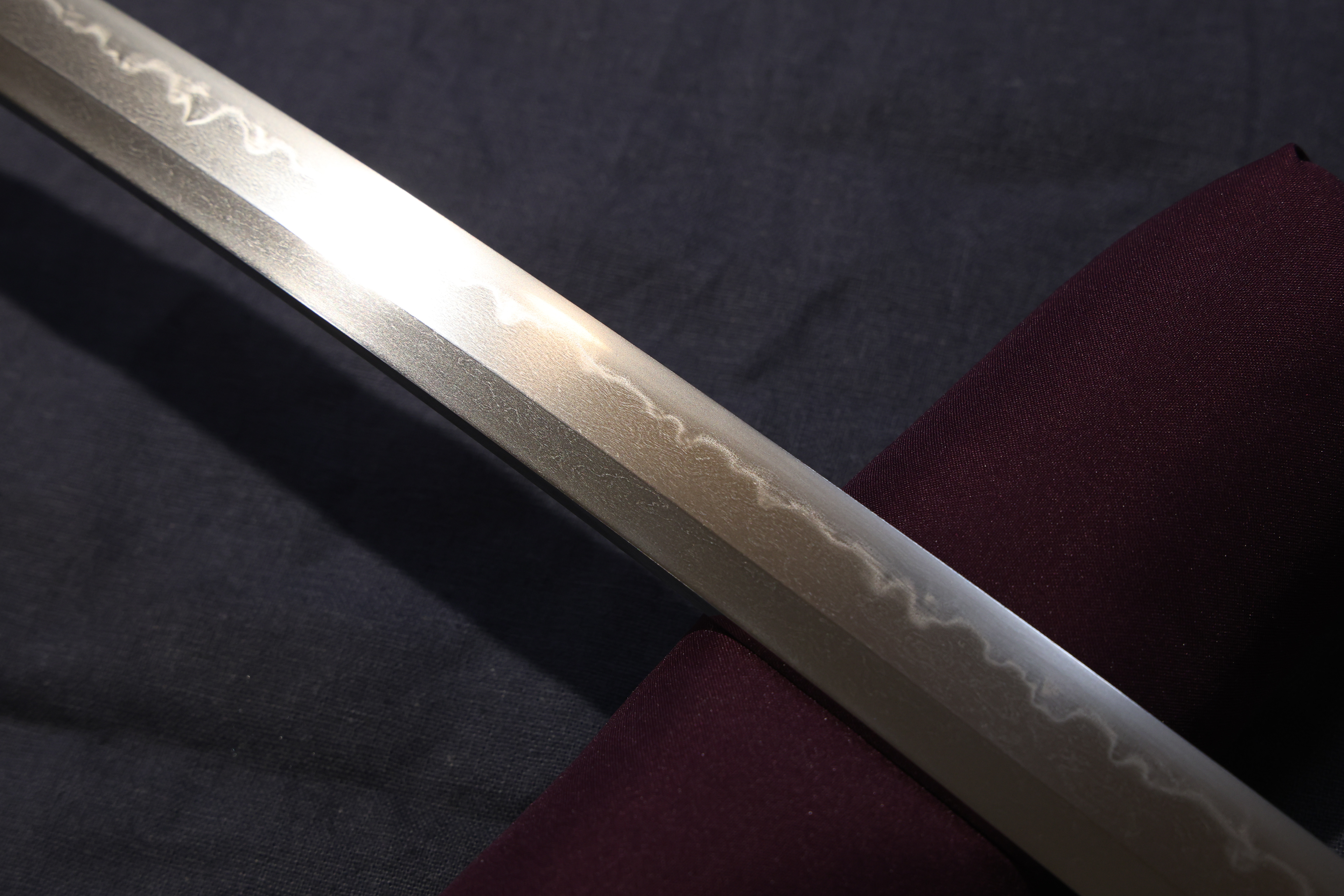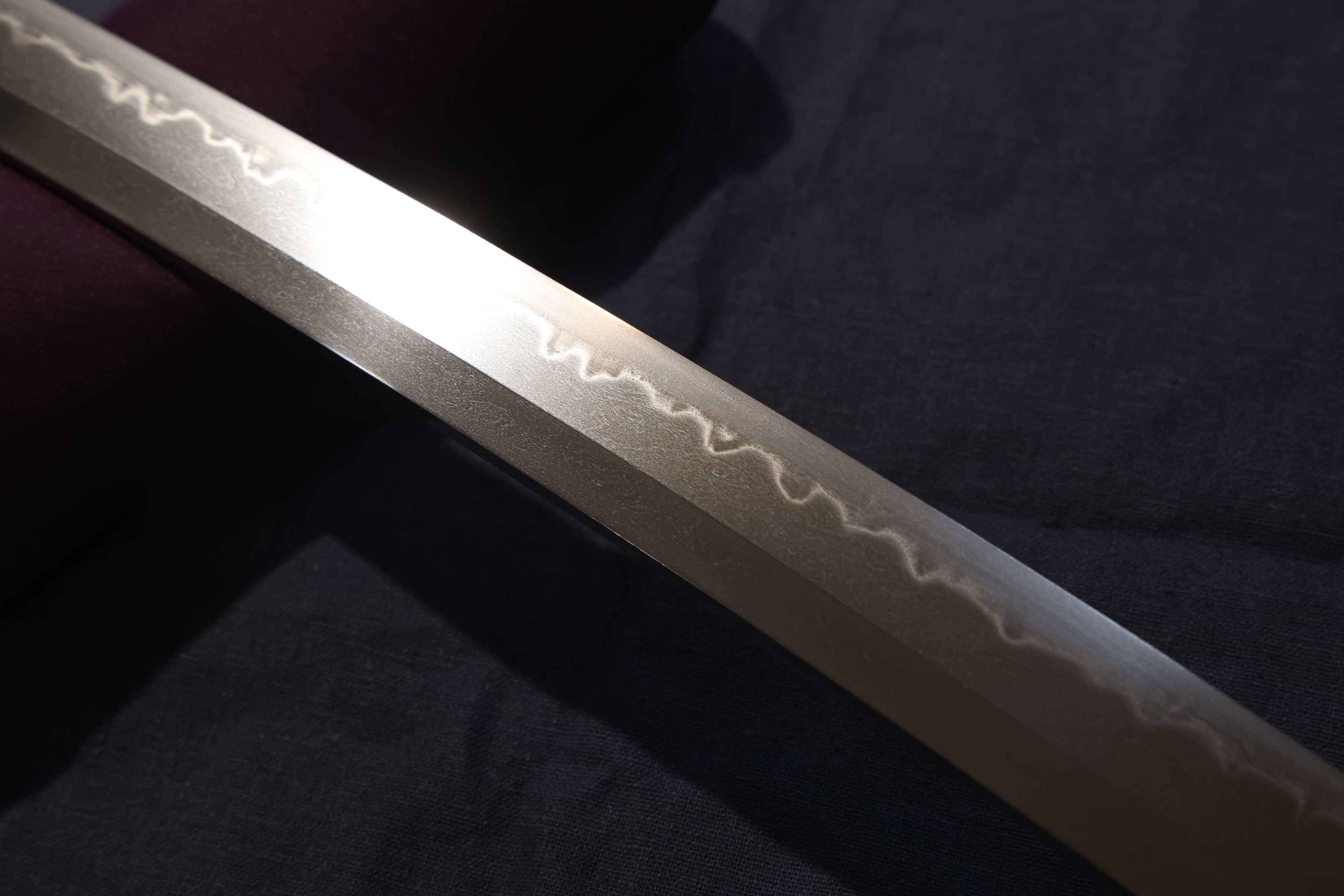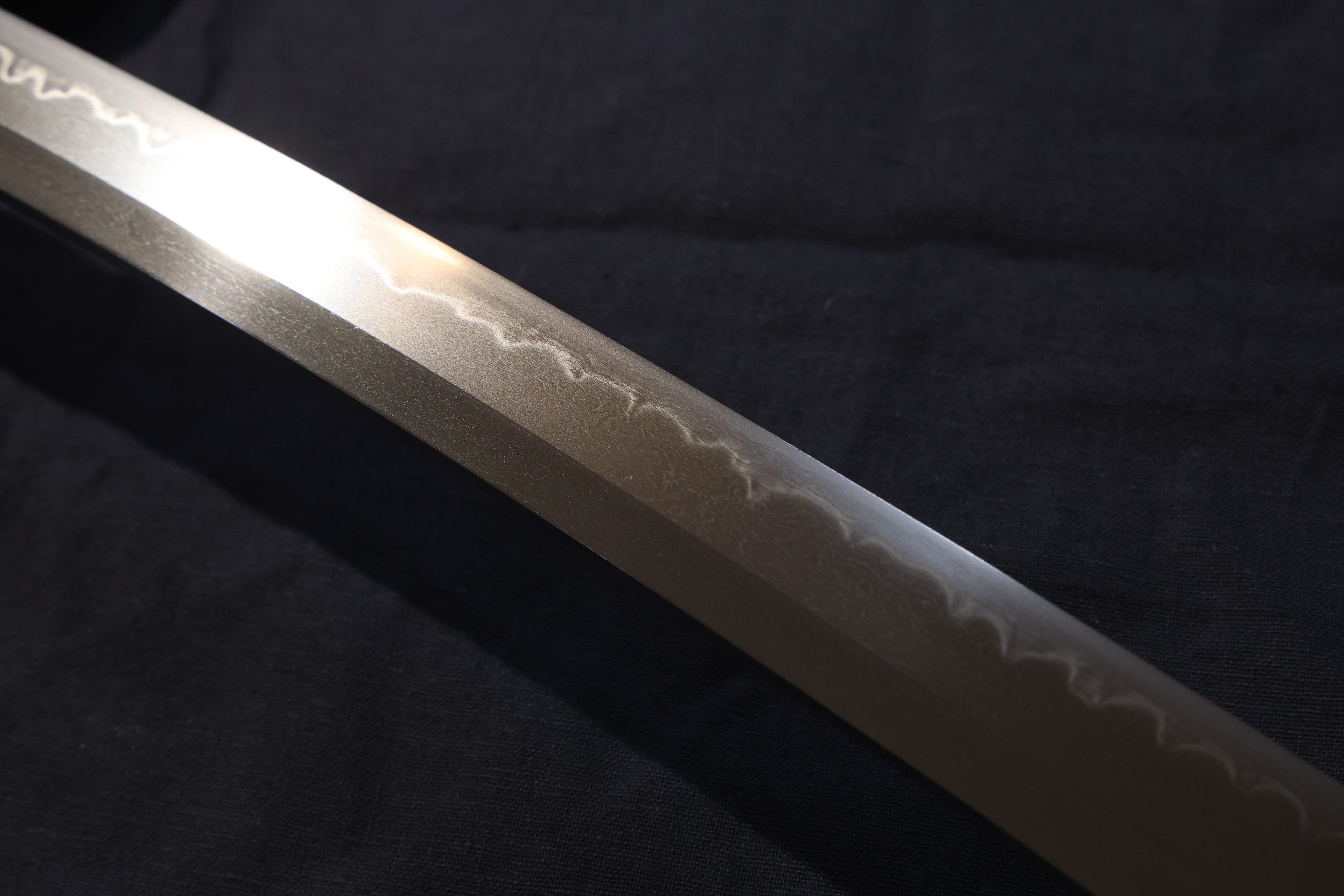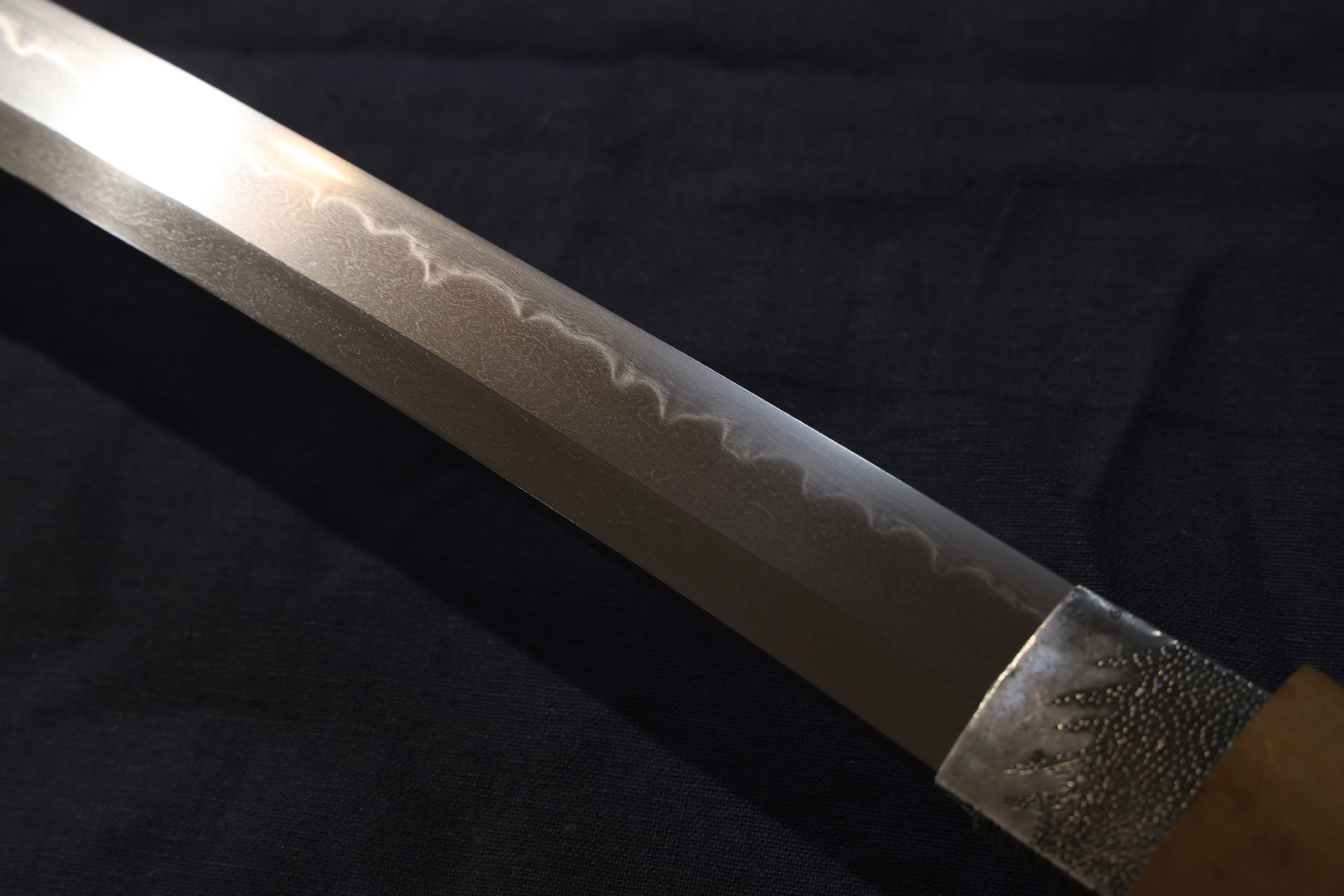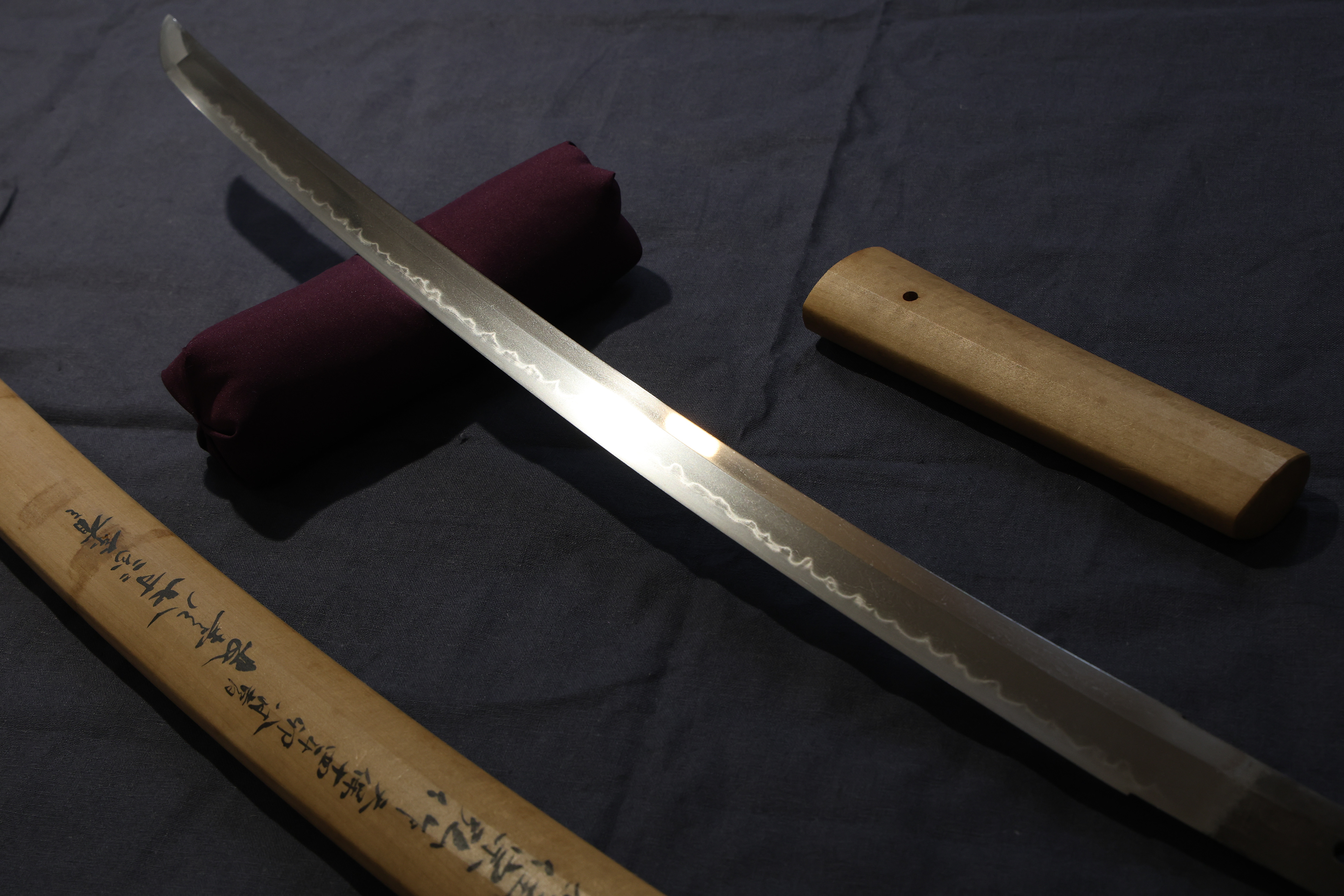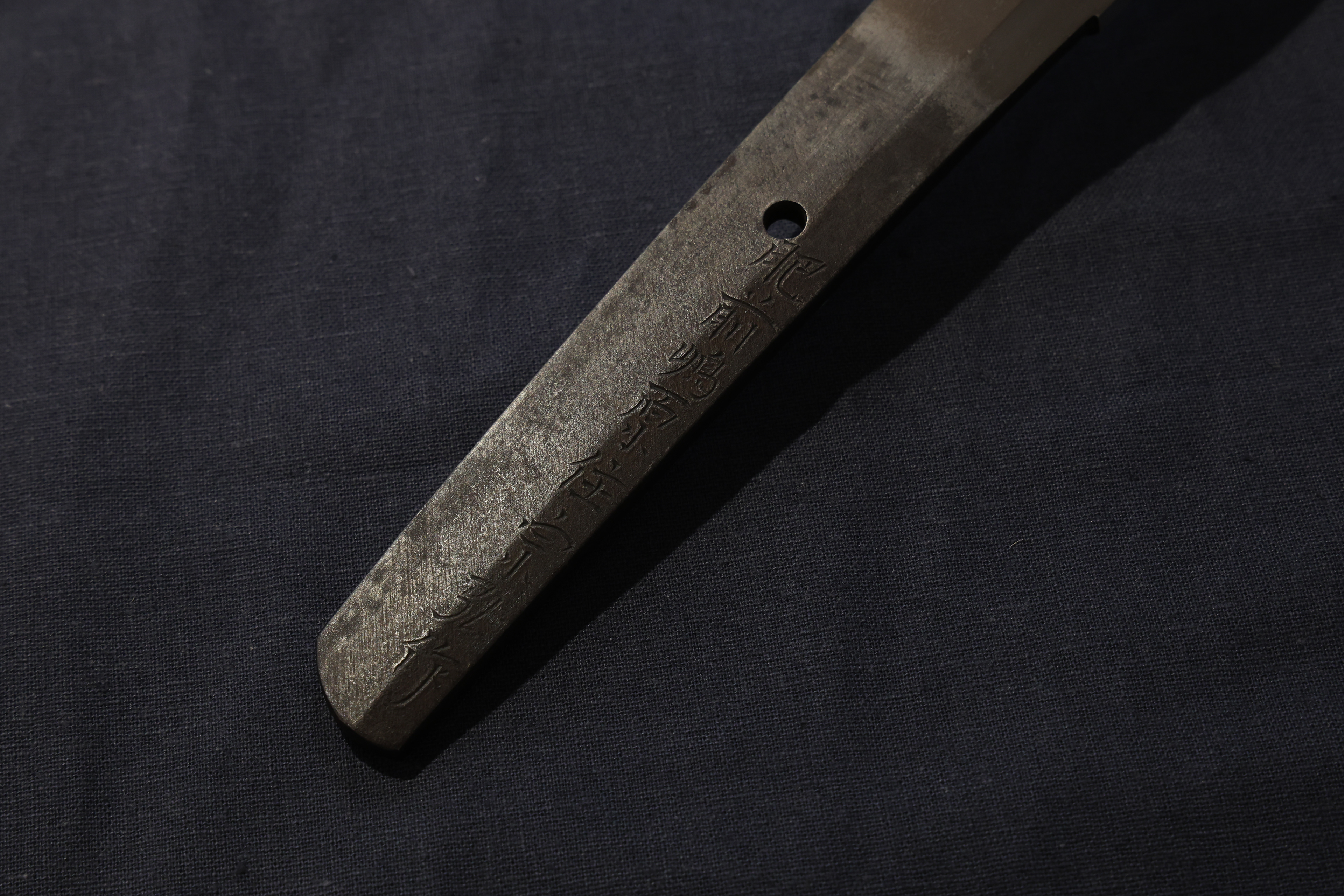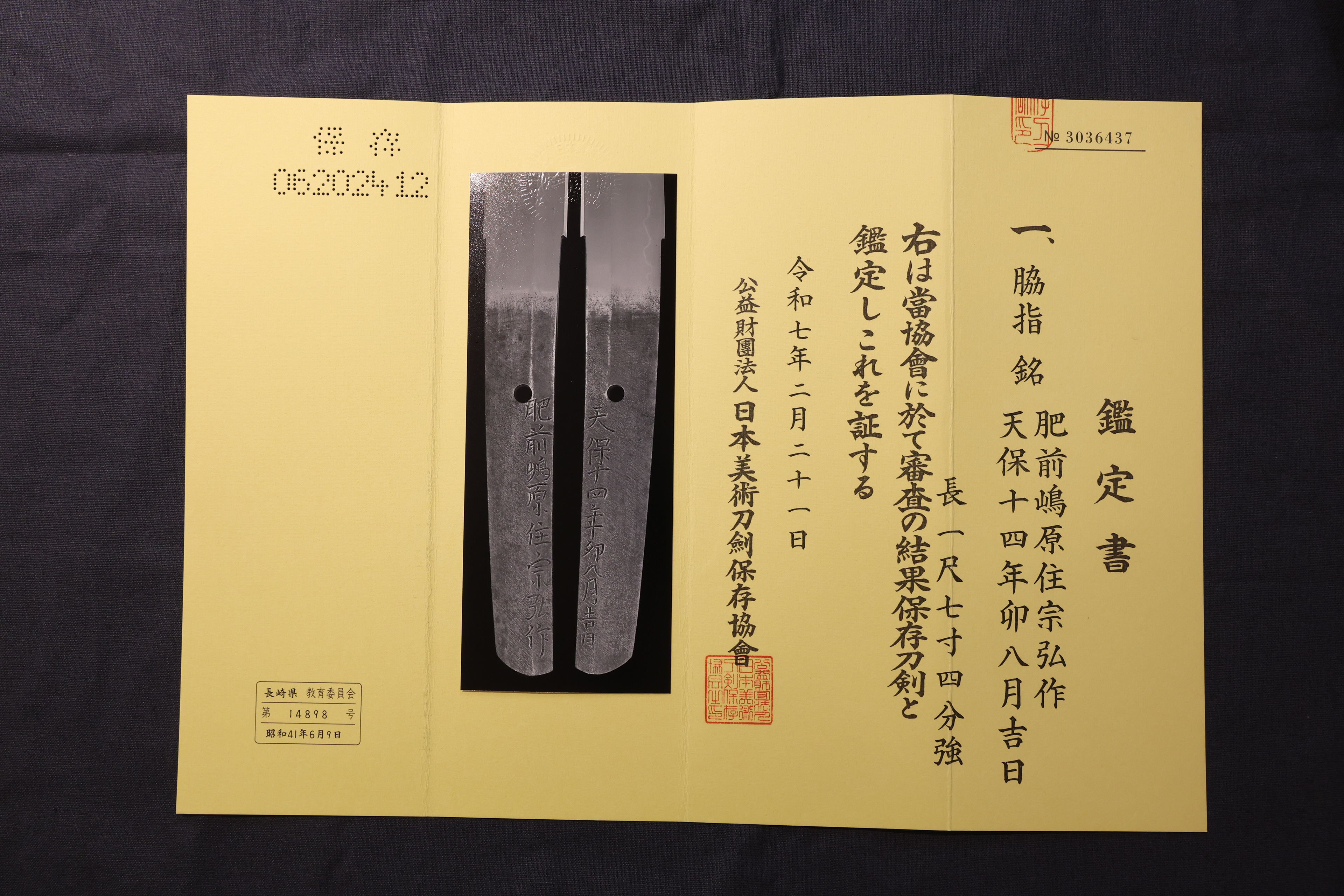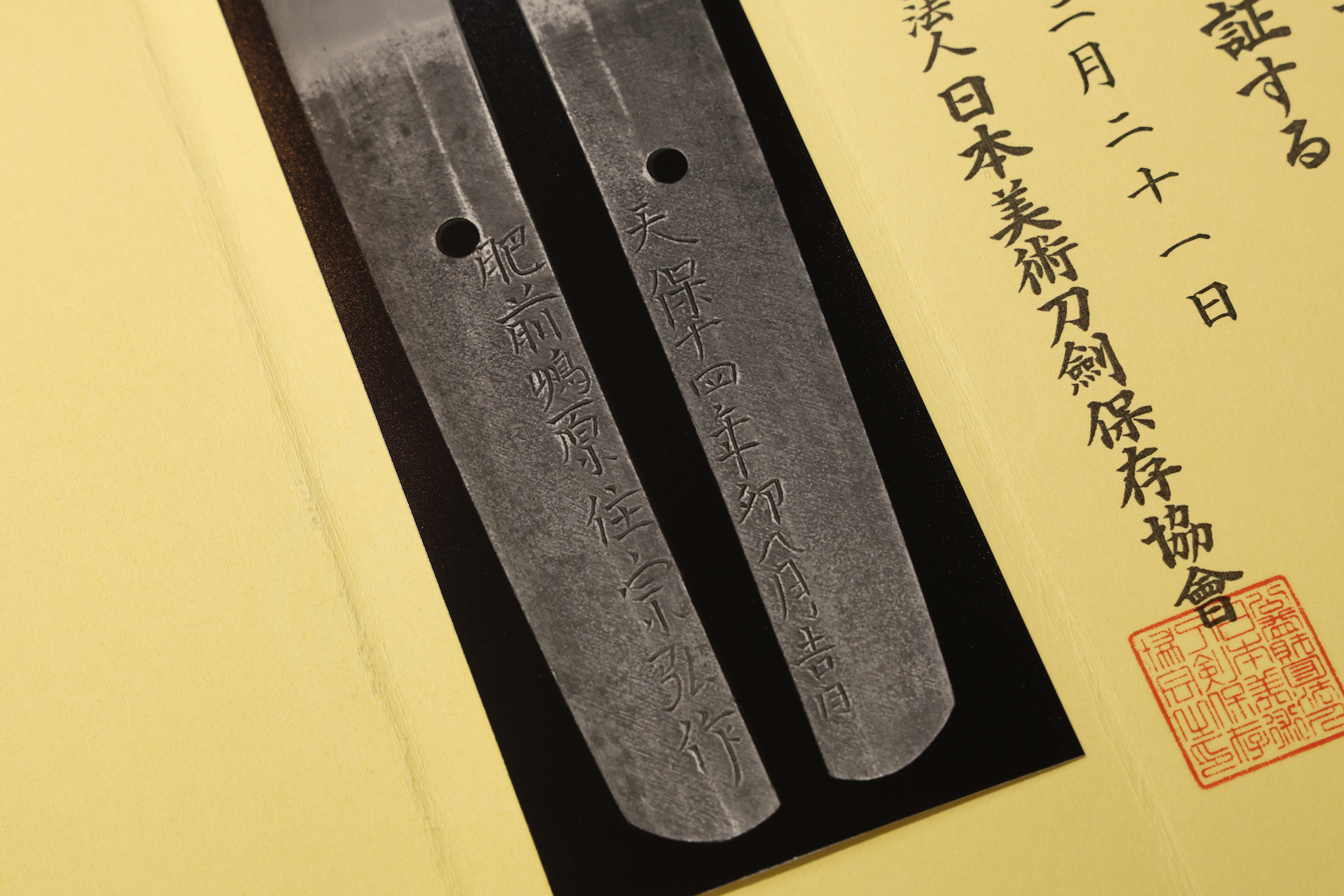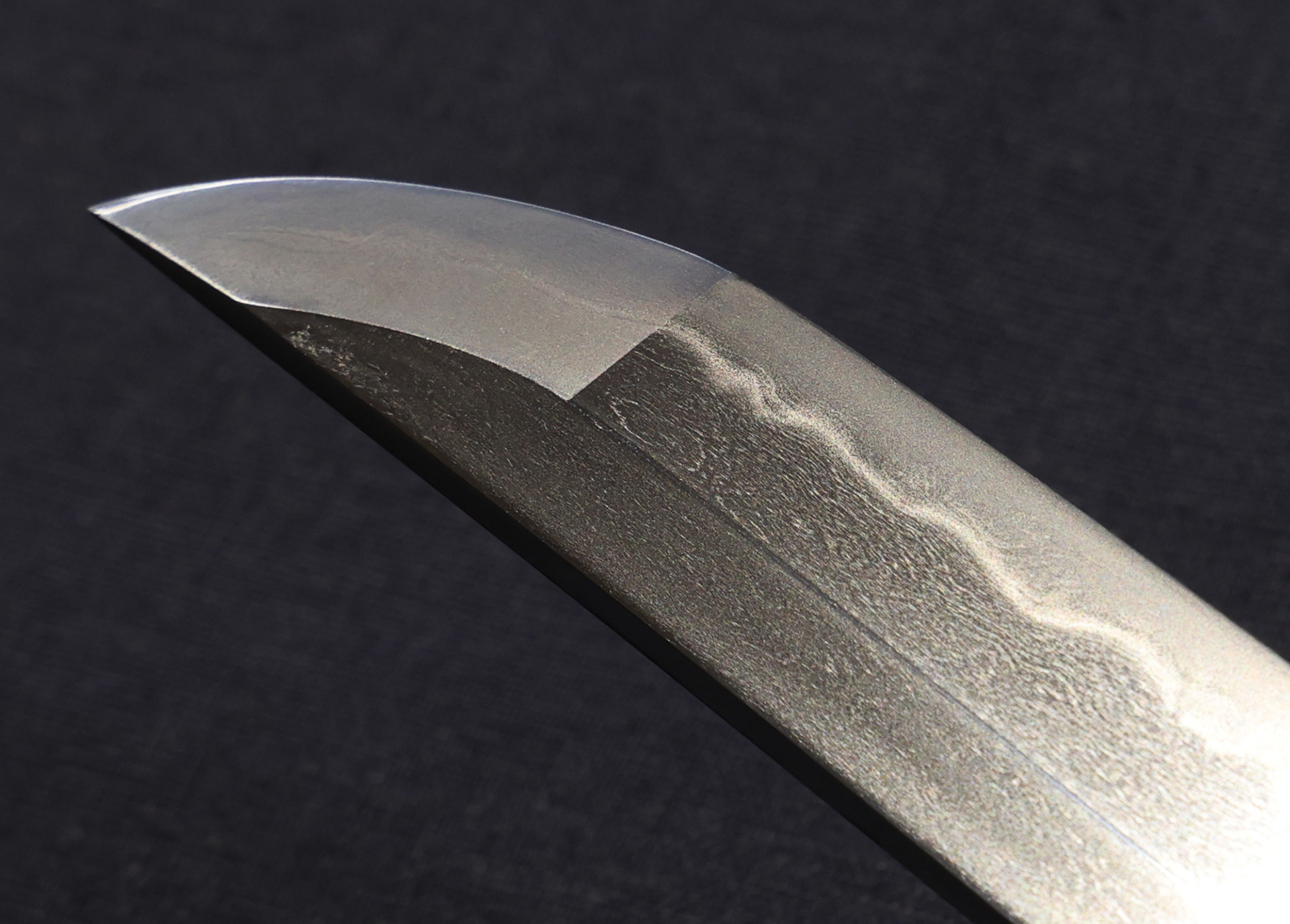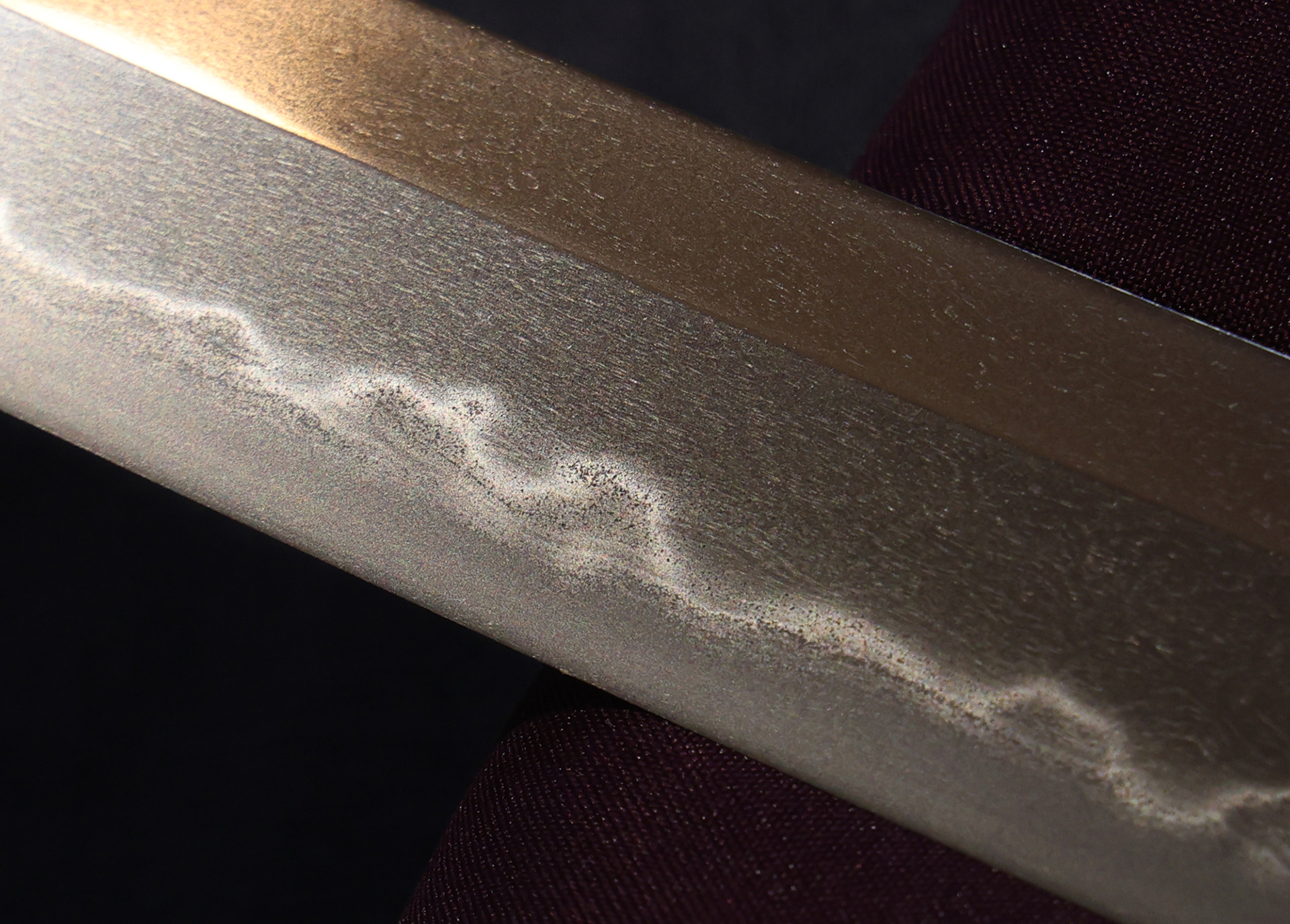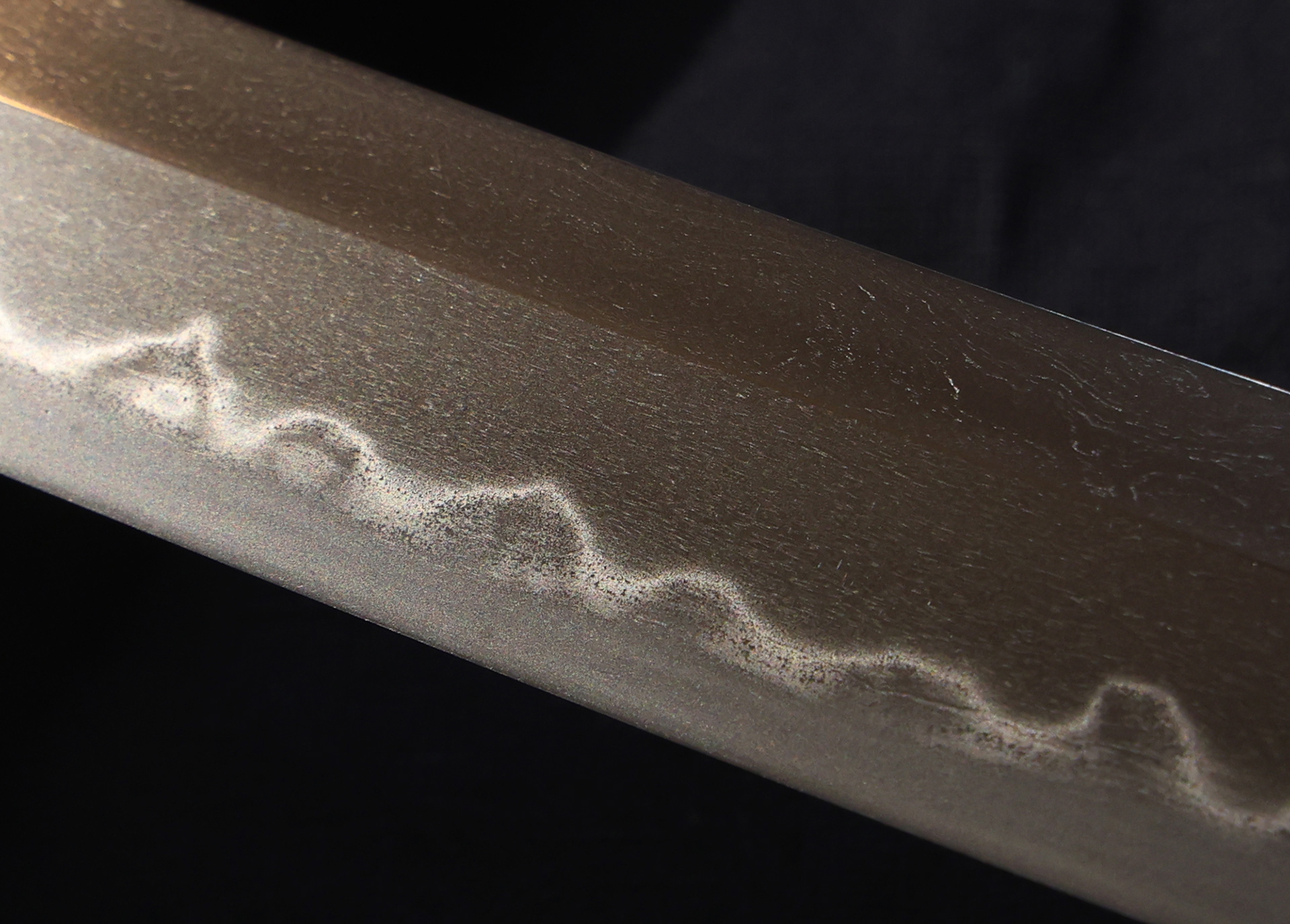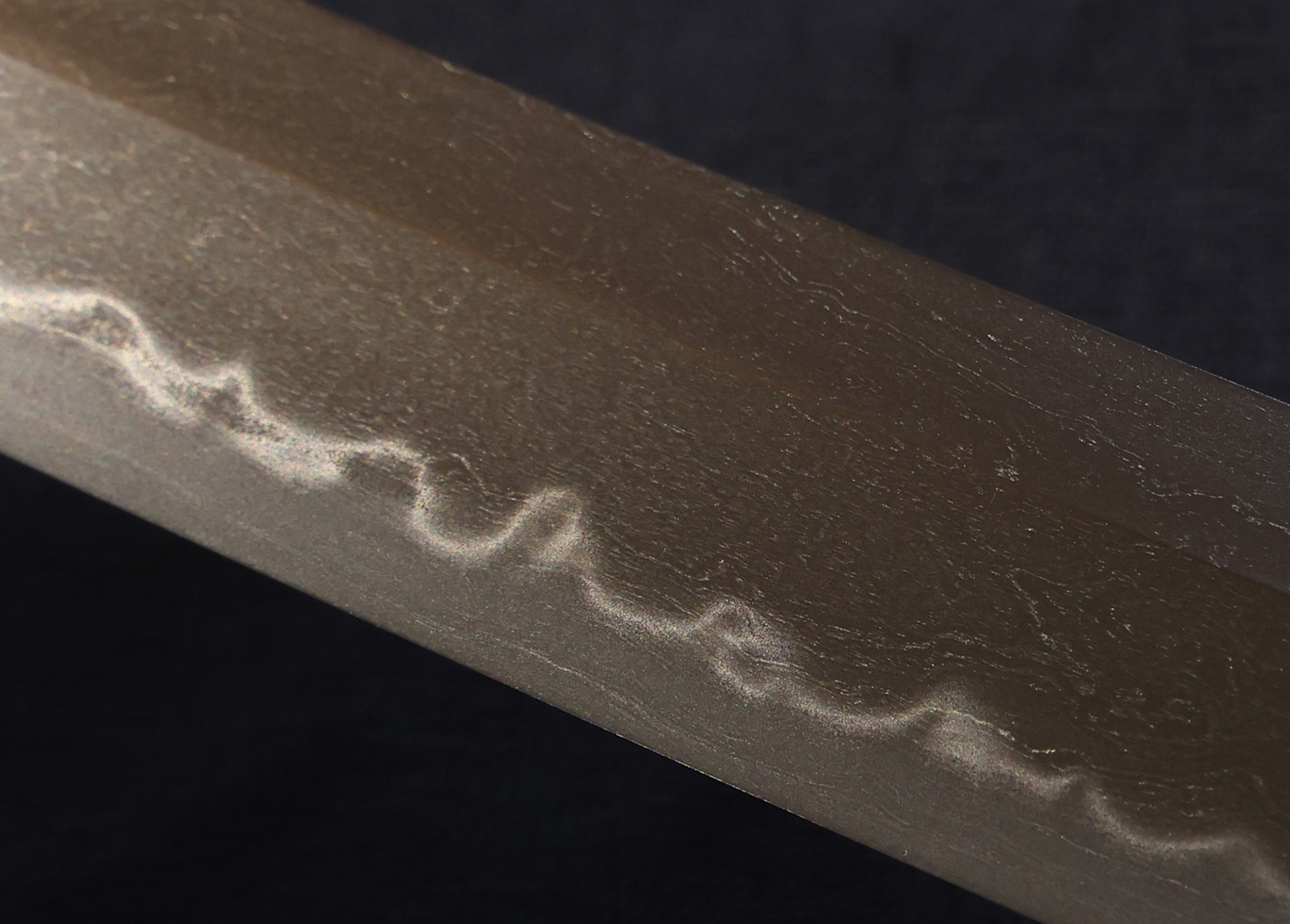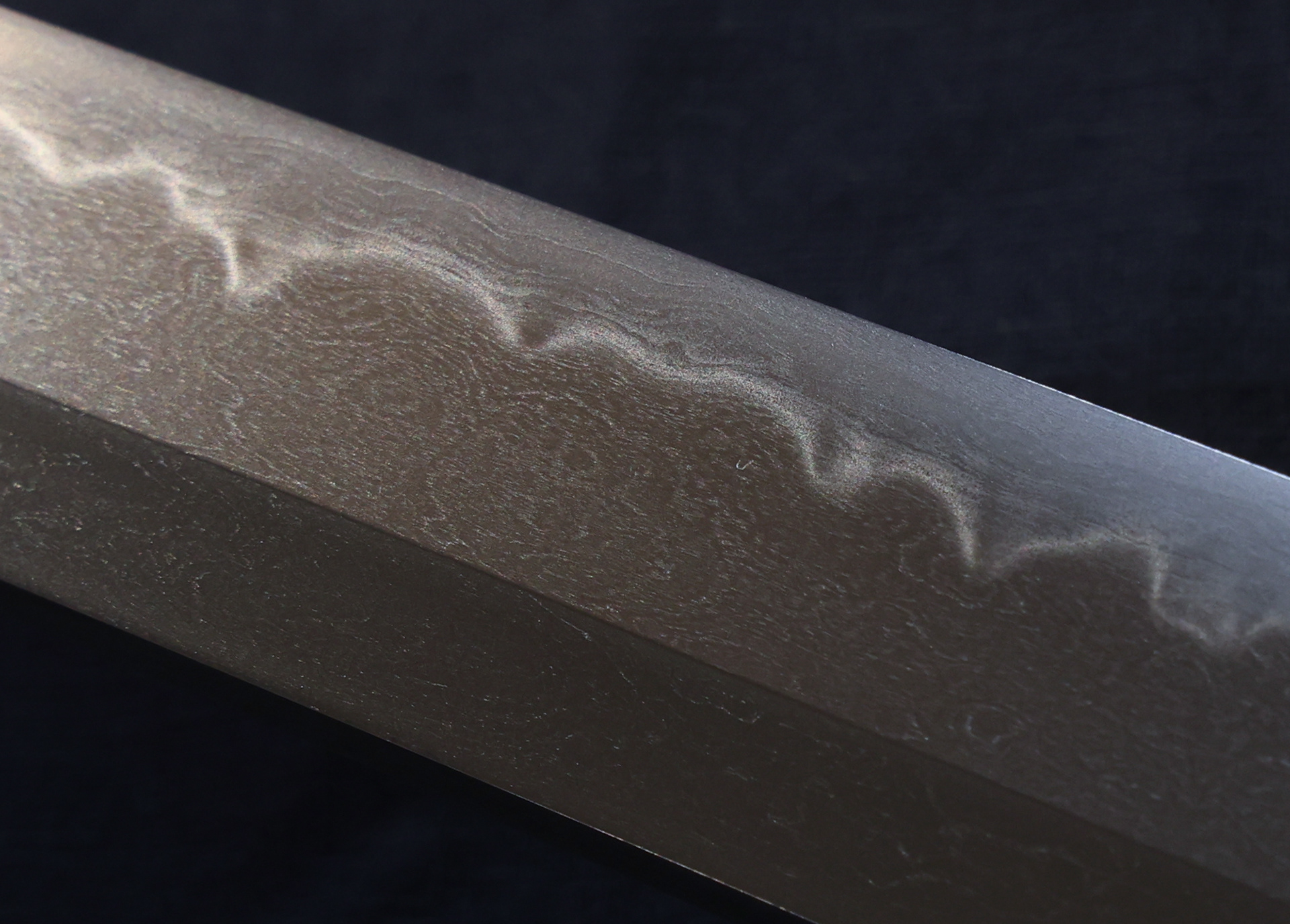肥前嶋原住宗弘
保存刀剣鑑定
Hizen Shimabara-jū Munehiro (肥前嶋原住宗弘)
Munehiro (宗弘), also known by the common names Gohei (五平) and later Jubeei (寿兵衛), was originally named Hironao (広直). He became a disciple of Dōtanuki Munehiro (同田貫宗広) of Higo Domain (肥後藩) and changed his smithing name to Munehiro after completing his apprenticeship. According to records of his master Munehiro, he was registered as “Naruhara-goyō Gohei Hironao” (鳴原御抱 五平広直).
Upon returning to his hometown of Shimabara (嶋原) after completing his training, Munehiro forged a sword measuring 2 shaku 2 sun 9 bu (二尺二寸九分, approx. 69.4 cm) and presented it to the lord of Shimabara, Matsudaira Tadataka (松平忠候), on the 29th of the 12th month of Tenpō 13 (天保十三年, 1839). The story is documented in Shimabara no Rekishi (島原の歴史).
The wakizashi introduced here was created the following year, in Tenpō 14 (天保十四年, 1840).
Munehiro’s workmanship reflects the influence of his master. The jigane (地鉄) is dense and strong, with a deep black tone and a fine itamehada (板目肌) grain pattern intermixed with masamehada (柾目肌), showing subtle variations across the surface. The hamon (刃文) is primarily a lively gunome-midare (互の目乱れ) mixed with togariba (尖刃), producing a dynamic and powerful impression. The nakago (茎) is ubu-nakago (生茎), skillfully filed and of substantial form, characteristic of the Dōtanuki (同田貫) school lineage.
This wakizashi is documented with its oshigata (押形) — including the nakago and mei-giri — on page 224 of Hizen no Katana to Tsuba, Volume 2, Illustrated Edition (『肥前の刀と鐔 下巻 図録編』), written by Fukunaga Suiken (福永酔剣) and Terada Raisuke (寺田頼助) and published in 1974 by Yuzankaku Shuppan (雄山閣出版). This book is highly regarded as an important reference work for research into Hizen (肥前) swords and related fittings.
